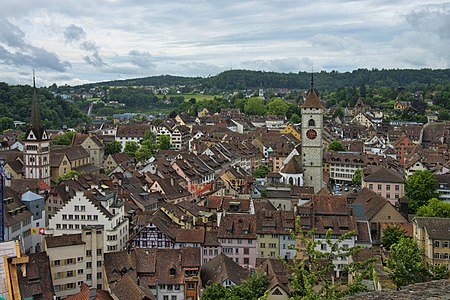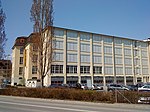Schaffhausen

Schaffhausen (German: [ʃafˈhaʊzn̩] ; Alemannic German: Schafuuse; French: Schaffhouse; Italian: Sciaffusa; Romansh: Schaffusa), historically known in English as Shaffhouse, is a town with historic roots, a municipality in northern Switzerland, and the capital of the canton of the same name; it has an estimated population of 36,000 as of December 2016. It is located right next to the shore of the High Rhine; it is one of four Swiss towns located on the northern side of the Rhine, along with Neuhausen am Rheinfall, the historic Neunkirch, and medieval Stein am Rhein. The old town has many fine Renaissance era buildings decorated with exterior frescos and sculpture, as well as the old canton fortress, the Munot. Schaffhausen is also a railway junction of Swiss and German rail networks. One of the lines connects the town with the nearby Rhine Falls in Neuhausen am Rheinfall, Europe's largest waterfall, a tourist attraction. The official language of Schaffhausen is (the Swiss variety of Standard) German, but the main spoken language is the local variant of the Alemannic Swiss German dialect.
Excerpt from the Wikipedia article Schaffhausen (License: CC BY-SA 3.0, Authors, Images).Schaffhausen
Spitalstrasse,
Geographical coordinates (GPS) Address Nearby Places Show on map
Geographical coordinates (GPS)
| Latitude | Longitude |
|---|---|
| N 47.7 ° | E 8.6333333333333 ° |
Address
Spitalstrasse 27
8200 , Emmersberg
Schaffhausen, Switzerland
Open on Google Maps









